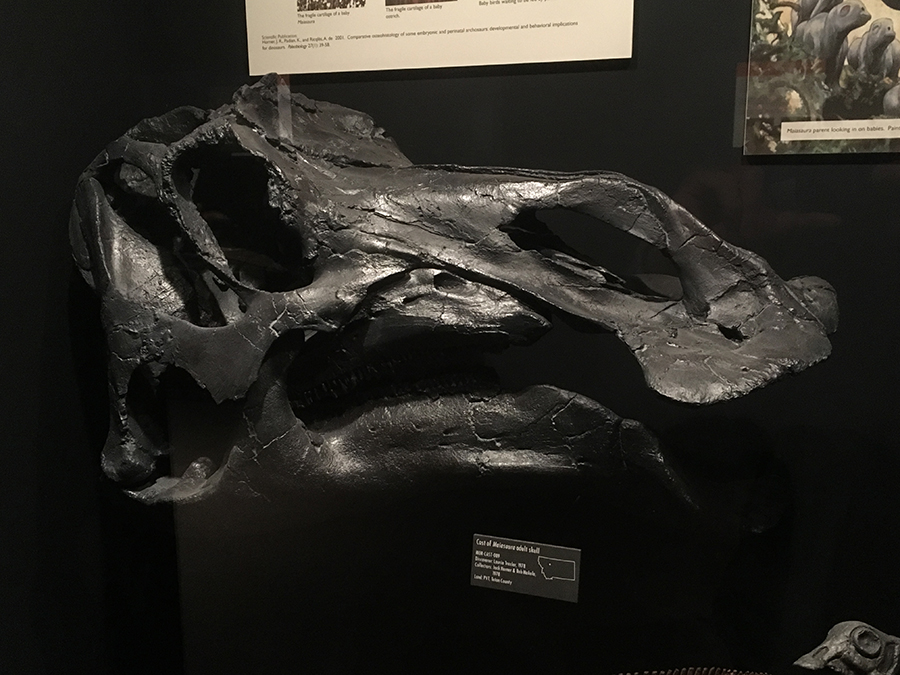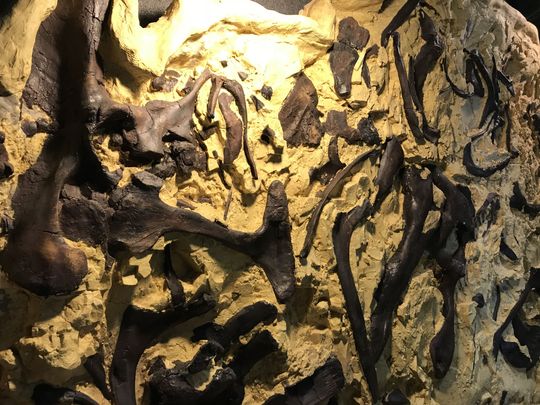Marking 40 Years Since Tiny Bones Changed the World's Understanding of Dinosaurs

It hardly seemed fair that so many important dinosaur finds came from Montana but ended up on display in the major museums of the East Coast.
Some ranchers mounted fossils in the county museum in the basement of the high school in Ekalaka, but that was all Montanans could see without a long trip or a fortuitous find of their own.
"That made us kind of upset. We decided we would build our own display," said paleontologist David Trexler.
His mother, Marion Brandvold, wife, Laurie, and he found their first significant dinosaur fossils in 1971. You can see those at the Old Trail Museum in Choteau.
And if ranchers in Elakaka could make a fossil display in their town, the trio decided they could, too. Brandvold had a rock shop, Trex Agate Shop, along U.S. Highway 89 and the dinosaurs would go in the back.
They thought they had their big find: a Maiasaura skull.
But one night as the Trexlers were cleaning up at their fossil dig along the Rocky Mountain Front, Brandvold wandered. Digging didn't have the same allure as discovery, and she had a knack for finding fossils.
"She liked to look. She liked to find. She was very good at identifications but as for digging a hole I think she'd done enough fence posts that just wasn't her thing," Trexler said.
Trexler recalled the smile on Brandvold's face as she waited for him to catch up.
"Within 10 minutes we knew we had baby duckbill dinosaurs," he said.
What they didn't know is that the small bones Brandvold found would upend the world's understanding of dinosaurs.
Trexler said they thought major museums didn't show baby dinosaur fossils because, well, how can little bones measure up to the thrill of a full-sized Tyrannosaurus rex?
No, it's just that no one had ever found baby dinosaur bones in North America.
RELATED: Montana's Best Dinosaurs: Five Finds That Have Shaped Science
And these were in a nest, something no one anywhere in the world had ever seen before.
"Before this was discovered everyone just knew dinosaurs were nothing but overgrown lizards, cold-blooded creatures that ate, slept, laid their eggs and that was the end of the story," Trexler said. "This discovery showed that at least one dinosaur species took care of its young, and it changed how the world perceived dinosaurs and modern reptiles."
Paleontologist Jack Horner saw the bones at the rock shop. He'd been to the East Coast institutions. He knew no one else had fossils like this.
It's taken 40 years, but now those baby dinosaur bones have a place of honor in a new exhibit at the Two Medicine Dinosaur Center next to the family's rock shop.
The exhibit debuted Saturday with a dinosaur-shaped cupcake display, an open house and decorating of the center's 4th of July parade float. Choteau's parade theme is “Diggin’ It,” in honor of the 40th anniversary of the baby dino discovery.
The new display also gives the bones dimension, showing how they fit together into a skeleton.

The dinosaur find is "the most important exhibit in our entire building," but the big dinosaurs have been stealing the show, Trexler said.
The exhibit also shares the story of Brandvold's life. The daughter of Bynum homesteaders, she found her first fossil at age five and a hired man explained what dinosaurs were. Brandvold worked in her rock shop, still in the family, to age 97 and died in 2014.
As for Montana, the state has an entire dinosaur trail now, connecting museums around the state that showcase important dinosaur exhibitions.
Source: www.greatfallstribune.com








